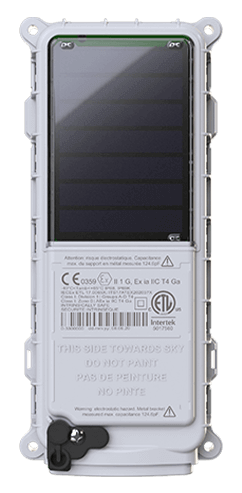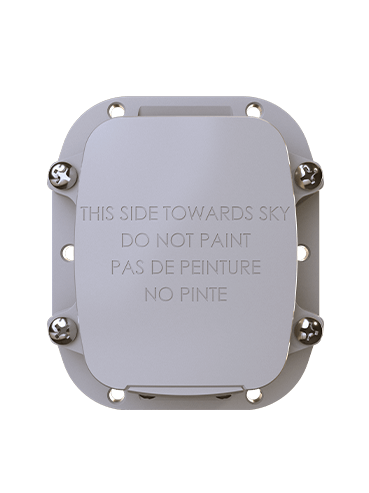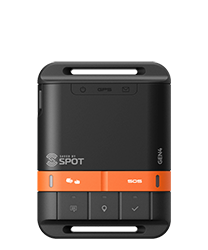How Satellite IoT Boosts Beef Yields
While it is now becoming commonplace to track and manage assets such as vehicles and equipment using satellite-based IoT solutions, tracking animals creates many more challenges. But as we look to technology to help us increase yields from the limited amount of agricultural resources on Earth, coupled with a growing demand for meat, Globalstar IoT VAR, MOOnitor, presents the potential to better understand cattle activity and maximize the amount of beef produced.
To date, studies about cattle activities have involved students sitting in fields with clipboards for hours on end or using wild animal tracking devices combined with elaborate offline data analysis
But a new Israeli company has developed a satellite-based solution that takes animal monitoring to a new level. By integrating the latest accelerometer technology, GPS, solar panel and satellite communications technologies on a neck-mounted cattle collar, MOOnitor is able to help commercial ranchers understand how best to manage their herds to maximize beef yields, evaluated by the number of weaned calves.
By measuring cattle activity such as how much time a cow spends resting, grazing and walking, ranchers can quickly react to developing situations and events. This information helps ranchers understand key parameters related to animal behavior such as quality of food and weight gain patterns, estrus events, pregnancies and other medical conditions. Ranchers can also use the information to increase production and optimize the number of weaned calves among the livestock population.
The MOOnitor collar includes an accelerometer, a GPS tracker, RF communications for on-site maintenance, two solar panels measuring just 85 by 65 mm and a Globalstar STX3 satellite chip for communications. The system gathers approximately 50MB of data every day, so MOOnitor designed a compression algorithm to reduce the data down to just 36 bytes within a single transmission each day. The data is then analyzed in the back-office system to calculate the herd's daily energy balance and body condition trends.
Given the often remote location and roaming of cattle, satellite is sometimes the only reliable communications option available. “Cattle in countries such as the US, Australia and South America graze in remote locations not used for any other agriculture,” explains Dr Sinay Goldberg, founder and CEO at MOOnitor. “Because cows are such independent beasts, ranchers tend to have little information about how their animals are faring, especially in large herds. By taking advantage of Globalstar’s extensive and highly advanced second generation satellite network, we deliver the information needed to effectively manage the herd and improve production right to the ranchers’ fingertips.”
For MOOnitor, one of the most important features was to be able to deploy in locations with no communications infrastructure. Using Globalstar’s STX3 simplex satellite transmitter with the lowest power-consuming technology on the market enabled MOOnitor to pack data communication link into the collar, making the collars as independent as the cows carrying them. Because STX3 uses very little power, the collar can fully function for seven days on it's internal battery, even without sunshine, and only needs two hours of sun to fully recharge. The STX3 module is also very small – the size of a coin, making it easy to fit into the design of the collar.
“Although MOOnitor technology would never replace a rancher, it enables vital monitoring capabilities and information such as earlier detection of sick cows. When they are sick, cows tend to hide in a herd so they are not vulnerable to predators. This behavior makes it even more difficult for ranchers to detect if a cow is unwell. The system detects whether a cow is sick, in estrus, pregnant or lactating.” added Goldberg.
A key contributor to the project is Ran Malamud. One of the foremost experts in cattle technology, he brings 30 years’ experience in nutrition and animal husbandry to MOOnitor, and his expertise from the last two decades specializing in livestock management technology. “When designing MOOnitor, we combined our own in-house knowledge with data about cattle activity available from the many published research reports in the public domain.”
MOOnitor recommends that ranchers deploy the collars across 10-20% of the herd - this enables them to extrapolate the results to very effectively manage the whole herd with a high level of statistical reliability. “Although the dairy business works on a per-cow basis, any results about grazing, calves and introducing bulls, are always gathered and reported at a herd level,” Malamud explains.
“Just like humans, irrespective of their breed and location, some individual cows can eat a lot and stay slim. So we could get very inaccurate information if we only looked at a single animal; but with an entire herd, we get a truly accurate and reliable picture,” he adds.
At a site in the North of Israel, 30 cows out of a herd of approximately one hundred have been wearing the MOOnitor collar since June 2015. Through this trial, MOOnitor has been extrapolating the data across the entire herd to learn about their behavior and its impact on weaning calves and beef yields. The information gathered and what can be inferred from it are both highly interesting and incredibly useful. For example, the data revealed the full impact of heat stress and how it can cause cattle to stop eating. There was also an instance where the collar data acted as an early warning system and indicated very early on that a cow was sick.
“Throughout the trial, the hardware and communications have worked very well. The Globalstar satellite communications have achieved 97% success rate in message transfer, exceeding our SLAs. This figure is remarkable when one's considers that cows do not cooperate with antenna orientation directions . We have also learned the best way to attach the collars to ensure they don’t get damaged and to ensure we receive data even when the collar location on the cow is not optimal,” said Goldberg.
“One new learning from the pilot is that we can measure the amount of mastication or chewing during rumination. This parameter can be related to the amount of biomass being consumed or efficiency of converting this into beef. This is a major leap forward when you consider that previously a person would have to spend the hours manually recording such data. We believe that analyzing these metrics could provide further valuable data in the future,” Goldberg added.
The worlds of Presicion Agriculture, M2M, IoT and satellite communications are resulting in exciting new developments in agriculture and farming. We have seen how quickly human health monitoring has taken off, and now cattle and ranchers can benefit from these technologies. As ranchers understand their animals’ wellbeing, they can maximize beef production and help their bottom line.
 SmartOne Solar
SmartOne Solar SmartOne C
SmartOne C STX3
STX3 SPOT X
SPOT X SPOT Gen4
SPOT Gen4 SPOT Trace
SPOT Trace